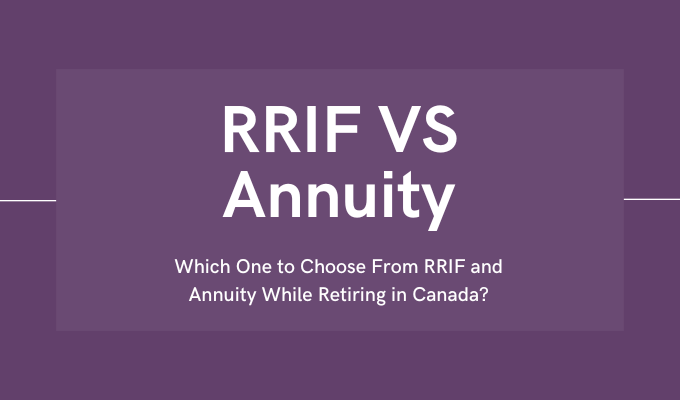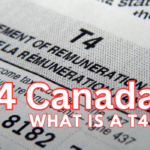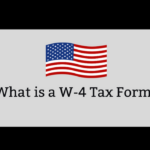You can read this post to know about RRIF VS Annuity: Which One to Choose From RRIF and Annuity While Retiring in Canada?
RRIF VS Annuity
Like your RRSP, an RRIF is a grouping of investments like bonds or equities. Annuities, on the other hand, are basically insurance policies that pay you a fixed sum of money each year or each month for a predetermined length of time.
You must be interested in learning more about RRIF VS Annuity if you’re beginning to prepare for your retirement years. The Registered Retirement Income Fund (RRIF) and Registered Life Annuity (RLA) are the two retirement income plan types that are compared on this page. This article is a comprehensive source of knowledge that you may use to plan your retirement.
|
Important Links |
Understanding RRIF
Your retirement income is intended to be paid from a tax-sheltered investment account (RRIF). It consists of retirement funds from an RRSP (registered retirement savings plan). Your RRSP must be converted to an RRIF by the time you turn 71, though the Canada Revenue Agency will let you change before then.

A registered retirement income fund (RRIF) can be set up with nearly any financial institution, including banks and life insurance companies. To set up an RRIF, you can just stroll into any bank. One or more of your current RRSPs may be used to transfer money invested to the financial institution for this RRIF.
You have a variety of options when it comes to investing in RRIFs, including equities, mutual funds, GICs, ETFs, and other securities. You will have to keep making decisions about the investments you make with the RRIF as time goes on. For your RRIF account, you can also designate a beneficiary.
RRIF VS Annuity Overview
| Article | RRIF VS Annuity |
| Country | Canada |
| Further Details | Find Here |
Understanding Annuity
Companies that sell life insurance also offer annuities, which resemble pension programs. The financial institution (often a life insurance company) guarantees annuity payments for life when the retiree invests their RRSP funds into a payout annuity. Annuity payouts can be configured to last until age 90 or to provide annuity income for life.
It is no longer possible to take additional lump sum withdrawals from your investment or make any other modifications, but it is also no longer vulnerable to interest rate or market volatility. A combined life annuity, for example, based on a married couple, or a single life annuity based on one individual (annuitant) are both possible options.
The uncertainty associated with turning your retirement funds into a steady stream of monthly income is eliminated with annuities. You are relieved of the decision on how to allocate your retirement assets once you have acquired the annuity. Stock market volatility is not a concern for you.
Comparing RRIF and Annuity
In a retirement plan, annuities and RRIFs each have advantages and disadvantages. Choosing RRIF will provide you with flexible and profitable long-term investing possibilities. But using an RRIF exposes you to the risks associated with investing, so you could see a gain one day and a loss the next.
Although the annuity gives you the assurance that you will receive a set sum on a regular basis, it also takes away your financial freedom. There is no financial benefit to choose between RRIF withdrawals and registered annuity income because both are taxed identically and at the same rate on your tax return.
|
Important Links |
All that’s different is that, although your RRIF is taxable, your annuity isn’t; payments just stop when there’s no longer a guarantee term. In the event that you pass away first, an RRIF can be tax-free transferred to your surviving spouse; if you pass away second, the amount is added to your estate’s income for that year and becomes taxable.
Which One to Choose From RRIF and Annuity While Retiring in Canada?
When it comes to their RRSP savings, the vast majority of Canadians opt for an RRIF over an annuity. You can select between an annuity and an RRIF by using the guidelines below.
- You should be more likely to select an RRIF the more flexibility you would like.
- Your preference for an RRIF would increase with your level of investment risk tolerance.
- Your preference for an RRIF can increase with the number of other annuity/pension income sources you have outside of CPP or OAS, which offers some longevity insurance.
- You should be more likely to select an RRIF if you believe that you will live a shorter life.
- You can lean more toward selecting an RRIF if you had a stronger desire to leave money for your spouse or other beneficiaries after you pass away.
An insurance firm or a bank can acquire an RRIF, but only a licensed life insurance representative acting on behalf of a Canadian Life Insurance firm can purchase a registered life annuity.
We are extremely delighted that you have joined us in reading this post on RRIF VS Annuity with us. We hope that after reading this post you will be able to make your decision.





